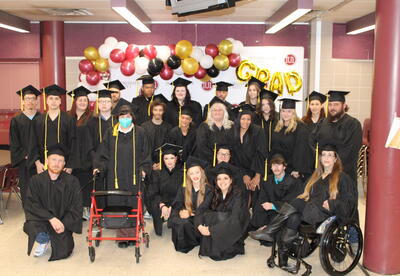Curriculum
These lessons are full 40-60 minute, hands-on fabrication projects related to science, technology, engineering, art, and mathematics (STEAM) concepts. The number of days needed is shown with each lesson.
This is an introductory lesson on all the basic principles needed to use a 3D printer. Follow step-by-step on how to create a small and time-efficient project to help introduce the concept to your class. This sample project simply introduces your class to the design software and process needed to create more unique structures of their own in the future. One consideration to this lesson though is 3D printing time for each student. Every student project can take anywhere 5–40 minutes, depending on the size of the project.
Lesson Plan: 3D Printing for Beginners
Grades: Primary (kindergarten–second grade)
Categories:Technology, Engineeering, Mathematics
Estimated time: Four days
This lesson is all about showing students at the intermediate level how to create their very own unique night light. They will be shown how to use basic software features to etch and cut out either glass or clear acrylic. The wooden bases themselves can either be cut out with the laser or from a CNC milling machine depending on which is more available. During the final steps of assembly is when students can also form an understanding of +&- wiring when it comes to connecting the LED strip to the 9V battery.
Grades: Elementary (third–fifth grade)
Categories: Science, Technology, Engineeering, Art, Mathematics
Estimated time: Four days
Students will design and fabricate their very own speaker system! First, students are given an amplifier/speaker kit that they will have to assemble and solder themselves. Afterwards, it’s all up to the individual to create a casing for this circuit system. This could be done either by using the step-by-step tutorial design provided, or by creating their very own unique and original design.
Lesson Plan: MP3 Speaker Project
Grades: Middle (sixth–eighth grade)
Categories: Science, Technology, Engineeering, Art, Mathematics
Estimated time: Nine days
This lesson teaches the basic principles of what exactly a laser cutter can do! Students will use a computer to design a stamp to be engraved onto rubber material. The class is shown how to use basic software features to laser etch a stamp that would be used to dip in ink. The students lastly design and assemble the handles which are either laser cut from wood or 3D printed from plastic.
Lesson Plan: Laser Cut Stamp Making
Grades: Elementary (third–fifth grade)
Categories: Science, Technology, Art, Mathematics
Estimated time: Four days
This lesson enables students to design and fabricate their own solar-powered car! Students will laser cut cardboard/wood to uniquely design the body/wheels of their car assembly. It’s all up to the individual to then create a casing for a small DC motor to attach onto an axle (dowel rod), using plastic gears while calculating the best gear ratio. After assembly, a small solar panel is connected to the DC motor to bring their car to life!
Lesson Plan: Fabricated Solar Car
Grades: Middle (sixth–eighth grade)
Categories: Science, Technology, Engineeering, Art, Mathematics
Estimated time: Five days
This lesson introduces the software and setups needed to use a vinyl cutter. Students will learn how to create a small adhesive vinyl sticker to introduce the design concept needed. The sample project included introduces step-by-step on how to draw a design and the process needed to create more unique graphics in the future. Machine setups are also noted for the instructor to learn how the vinyl cutter operates and sustains itself for more projects. Each student project can take anywhere between 10secs-5mins to cut out, depending on the size of the assignment.
Lesson Plan: Vinyl Sticker Tutorial
Grades: Primary (kindergarten–second grade)
Categories: Technology, Engineeering, Art, Mathematics
Estimated time: Three Days
Students will learn to construct a digital clock circuit while designing a casing for it. This project gives students an understanding of basic electronics/circuitry as well as different fabrication features to build an exterior for it. Option to take this project an extra step further where students can learn from start to finish how to design the circuit board itself, have it cut from a CNC milling machine, and then programming a code into it.
Grades: High (ninth-twelfth grade)
Categories: Science, Technology, Engineeering, Mathematics
Estimated time: Five-Ten days
Students will team up to design and CNC cut their own trebuchet. The challenge would begin with researching/brainstorming to build and test a working prototype. Each trebuchet will contain the same weight (200g) for a counter balance and each toss a marble (5g). The goal is to design a trebuchet that will throw the marble the furthest and most accurate. Preliminary knowledge or class preparation may be required.
Grades: High (ninth-twelfth grade)
Categories: Science, Technology, Engineeering, Mathematics
Estimated time: Five days









